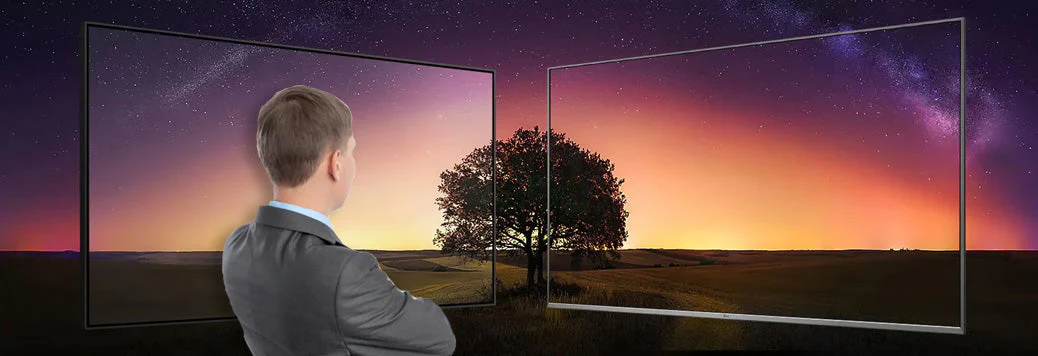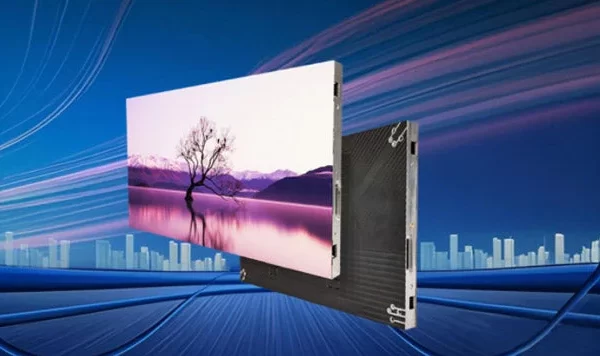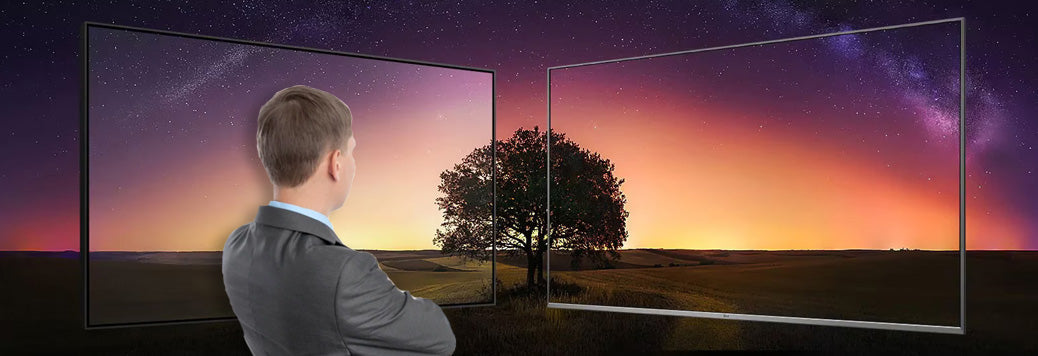
We explore how UHD displays redefine image quality beyond HD, with deeper colour, sharper resolution, HDR and 4K projection technology.
From grainy CRTs to OLED marvels, display technology has evolved dramatically over the past few decades. Among the most significant milestones is the transition from High Definition (HD) to Ultra-High Definition (UHD). While many associate UHD primarily with “4K resolution,” its implications run far deeper, encompassing advancements in colour, contrast, frame rate and content delivery.
In this article, we’ll explore what UHD truly represents, how it differs from HD in both technical and experiential terms and what this shift means for the future of visual media.
Understanding the Basics: HD, Full HD and UHD
At the most basic level, resolution refers to the number of pixels a display can render. HD was initially defined as 1280×720 pixels (720p), a considerable leap over the older 480p standard-definition formats. This was followed by Full HD (FHD) at 1920×1080 pixels (1080p), which has remained the de facto baseline for many years.
UHD, often marketed as 4K, takes resolution to the next level with 3840×2160 pixels, offering four times the pixel count of Full HD. This increase delivers a much sharper image, particularly on larger screens or when viewed from closer distances. UHD also scales up to 8K (7680×4320 pixels), though this remains a niche offering due to content limitations and hardware demands. Despite the jump in pixel count, UHD maintains the familiar 16:9 aspect ratio, ensuring compatibility with existing HD media formats.
UHD Means More Than Just More Pixels
While resolution is the most obvious improvement, UHD displays represent a qualitative shift in visual performance. At the forefront of these advancements are colour depth, colour gamut and dynamic range.
- Higher Colour Bit Depth
HD content typically uses 8-bit colour, translating to about 16.7 million possible colours. UHD supports 10-bit (or even higher) colour depth, rendering over 1 billion shades. The difference is not just numerical—this results in smoother gradients, reduced banding and more lifelike visuals, especially in shadows, skies and subtle textures. - Expanded Colour Gamut
UHD content aligns with the Rec. 2020 colour space, which offers a much broader gamut than the Rec. 709 standard used in HD. This means deeper reds, vibrant greens and purer blues. UHD displays are better equipped to show colour as originally intended by filmmakers and game designers, making the viewing experience richer and more immersive. - High Dynamic Range (HDR)
One of the most transformative features of UHD is HDR, which dramatically improves contrast by allowing both deeper blacks and brighter highlights in the same frame. Standards like HDR10, Dolby Vision and Hybrid Log Gamma (HLG) push the dynamic range of modern displays far beyond what HD could support. The result is more dimension, realism and emotional impact in every frame.
It’s worth noting that the above characteristics are not de facto fixtures of UHD displays. However, they are much more likely to be found in resolutions that exceed the HD spec.
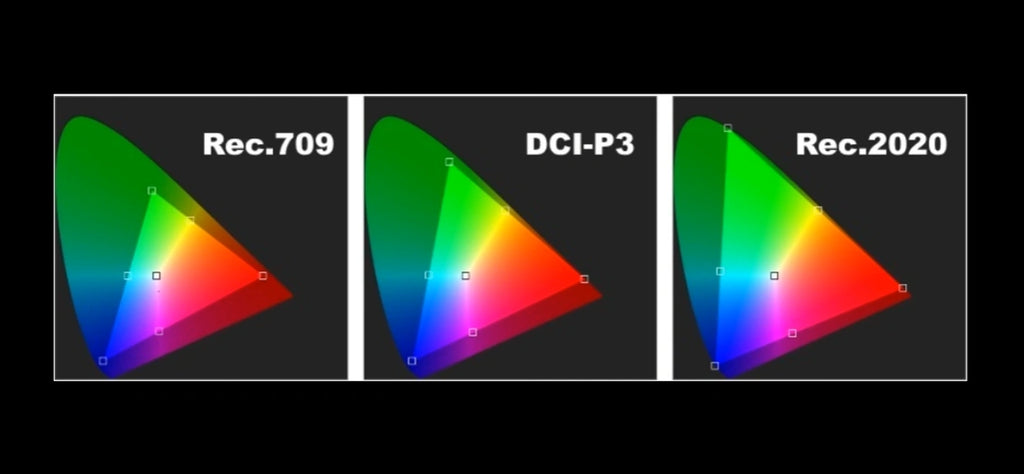
Image credit – Gagadget.com
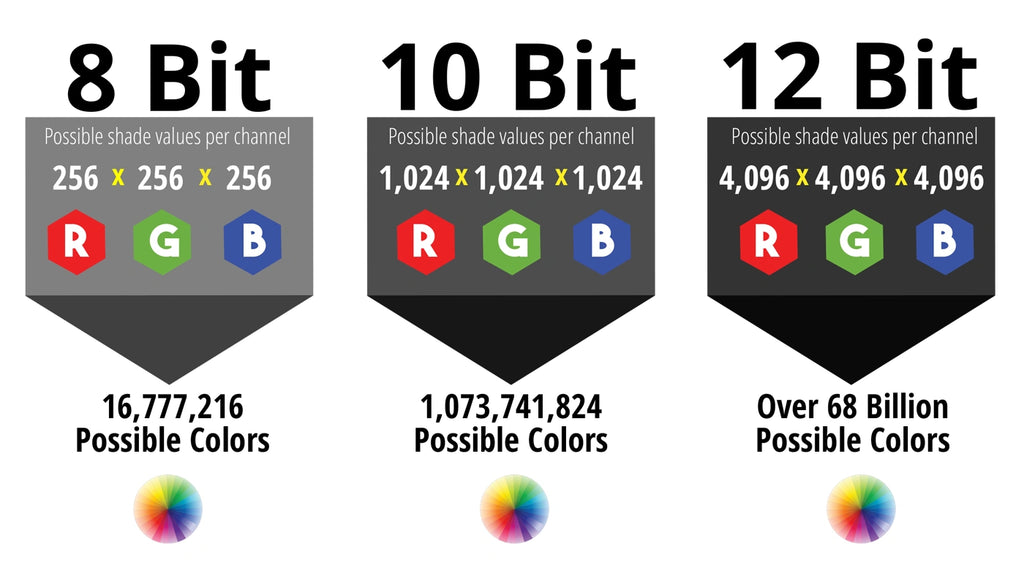
Image credit – Videomaker
UHD Needs the Right Display Technology
To unlock the full potential of UHD, resolution alone isn’t enough. The display panel itself plays a critical role in delivering the enhanced visual experience. OLED displays, known for their pixel-level light control, produce true blacks and infinite contrast ratios. This makes them ideal for HDR content and cinematic visuals. QLED and mini-LED displays, by contrast, excel in peak brightness, making them ideal for well-lit rooms where punchy visuals are needed.
The emerging Micro LED technology blends the best of both—high contrast, peak brightness and exceptional durability. Though still expensive and mostly reserved for commercial and luxury applications, Micro LED represents the future of UHD and beyond. However, there exist cheap UHD panels that often cut corners on colour reproduction, peak brightness or HDR processing. As a result, not all 4K displays offer a true UHD experience, once again reinforcing that resolution alone doesn’t guarantee quality.
The UHD Content Ecosystem: Streaming, Gaming and More
Early UHD adoption was hampered by limited native 4K content, but today, platforms like Netflix, Amazon, Disney and Apple stream vast UHD libraries, often with HDR and Dolby Atmos. The trade-off: premium plans, fast internet (20 Mbps+) and compatible gear. UHD Blu-rays still offer the highest quality, with top-tier bitrates and lossless audio, though physical media is fading. In gaming, UHD is now the norm—PS5, Xbox Series X and high-end PCs deliver 4K with HDR and high refresh rates, setting a new performance bar.
However, the only delivery channel that is not quite up to modern spec is Broadcast TV, using 720p/1080i, leaving AI upscaling to do the heavy lifting for a UHD experience. Yet despite these hurdles, 4K adoption continues to soar. From affordable TVs to workplace monitors and creative studios, UHD displays are becoming the default. Consumers and professionals alike now expect the sharpness and clarity 4K brings, making it less a premium feature and more a baseline standard.
UHD in Projection: The Rise of True 4K Projectors
While UHD has become synonymous with TVs and monitors, 4K projectors are quietly revolutionising home cinema and professional AV spaces. Projection brings unique challenges and opportunities in delivering UHD visuals.
- Native 4K vs Pixel Shifting
Many budget 4K projectors rely on pixel shifting, using 1080p or intermediate panels to simulate UHD. While effective, they can’t match the sharpness of native 4K models from brands like Sony and JVC, which deliver true 3840×2160 resolution and cinematic clarity. - HDR and Brightness Challenges
Projectors can’t hit the peak brightness of TVs, making HDR tricky. Laser light engines, dynamic irises and scene-based HDR tone mapping help compensate, enhancing contrast and overall impact in modern high-end models. - The Emergence of UST 4K Projectors
Ultra Short Throw projectors offer big-screen UHD from just inches away, ideal for living rooms. Though ambient light and HDR performance remain challenges, top-tier UST models are closing the gap with traditional setups. - Professional and Commercial Applications
From cinemas to simulation labs, 4K projectors, especially laser-based, enable lifelike detail and colour for mission-critical tasks across healthcare, design and surveillance.
From pixel precision to dynamic lighting, 4K projectors showcase the nuances of UHD.
Now, let’s dive into the hardware that makes all this possible.
Hardware Considerations: More Than Just a Display
A proper UHD setup requires more than just a capable screen. The entire signal path, from source device to content format to cable interface, needs to support UHD standards. Modern UHD devices require HDMI 2.0 or 2.1 to handle 4K at 60fps or 120fps, particularly with HDR enabled. HDMI 2.1 also introduces features like eARC (Enhanced Audio Return Channel), VRR (Variable Refresh Rate) and ALLM (Auto Low Latency Mode), critical for gamers and AV enthusiasts.
Compression codecs like HEVC (H.265) and AV1 allow UHD content to be streamed at manageable bitrates without compromising visual integrity. These are a leap beyond the older H.264 codec used for HD streaming. Whether you’re streaming or using local content, a powerful SoC (System on Chip), sufficient RAM and efficient thermal management all contribute to a fluid UHD experience.
Visual Perception: Can You Really See the Difference?
The age-old debate is whether the average viewer can even perceive the difference between HD and UHD. And the answer is: it depends. At normal viewing distances, a 1080p image looks nearly indistinguishable from 4K on screens under 50 inches. But as screen size increases, or as viewers sit closer, the benefits of UHD become obvious.
More importantly, UHD’s enhancements in colour fidelity, contrast and motion handling are noticeable regardless of pixel density. Even if your eyes can’t distinguish individual pixels, they can certainly appreciate richer colours and deeper blacks. The notion of retina resolution, popularised by Apple, suggests that above a certain pixel-per-inch (PPI) threshold, extra resolution is wasted. But in real-world usage, UHD’s gains go beyond raw sharpness and extend into how lifelike an image feels.
UHD in Professional and Industrial Settings
Outside the living room, UHD has become indispensable in professional and enterprise environments. In film and post-production, 4K and 8K workflows allow editors to crop, stabilise and reframe shots without quality loss. Medical imaging in surgery and diagnostics benefits from UHD clarity to observe fine anatomical structures in real time.
In engineering and simulation, UHD supports detailed CAD models and real-world renderings with visual accuracy that HD cannot match. Surveillance systems now employ 4K cameras for facial recognition and license plate capture, especially in wide-area monitoring. UHD isn’t just about entertainment. In many industries, it’s a productivity tool.
The UHD Visual Ecosystem and What’s to Come
With 4K now standard and 8K emerging, the focus is shifting from more pixels to better pixels. AI-powered upscaling from NVIDIA, Samsung and others makes HD content look near-UHD, enhancing older media and smoothing over resolution gaps in broadcasts.
Higher refresh rates like 120Hz, 144Hz, even 240Hz are pushing UHD displays into high-performance realms, especially for gaming and eSports. Meanwhile, AR/VR/MR devices demand ultra-dense displays to eliminate screen-door effects and boost realism. UHD isn’t just a spec; it’s a full-stack upgrade that includes resolution, colour, processing, and delivery. It’s the new baseline for immersive, future-ready experiences.

